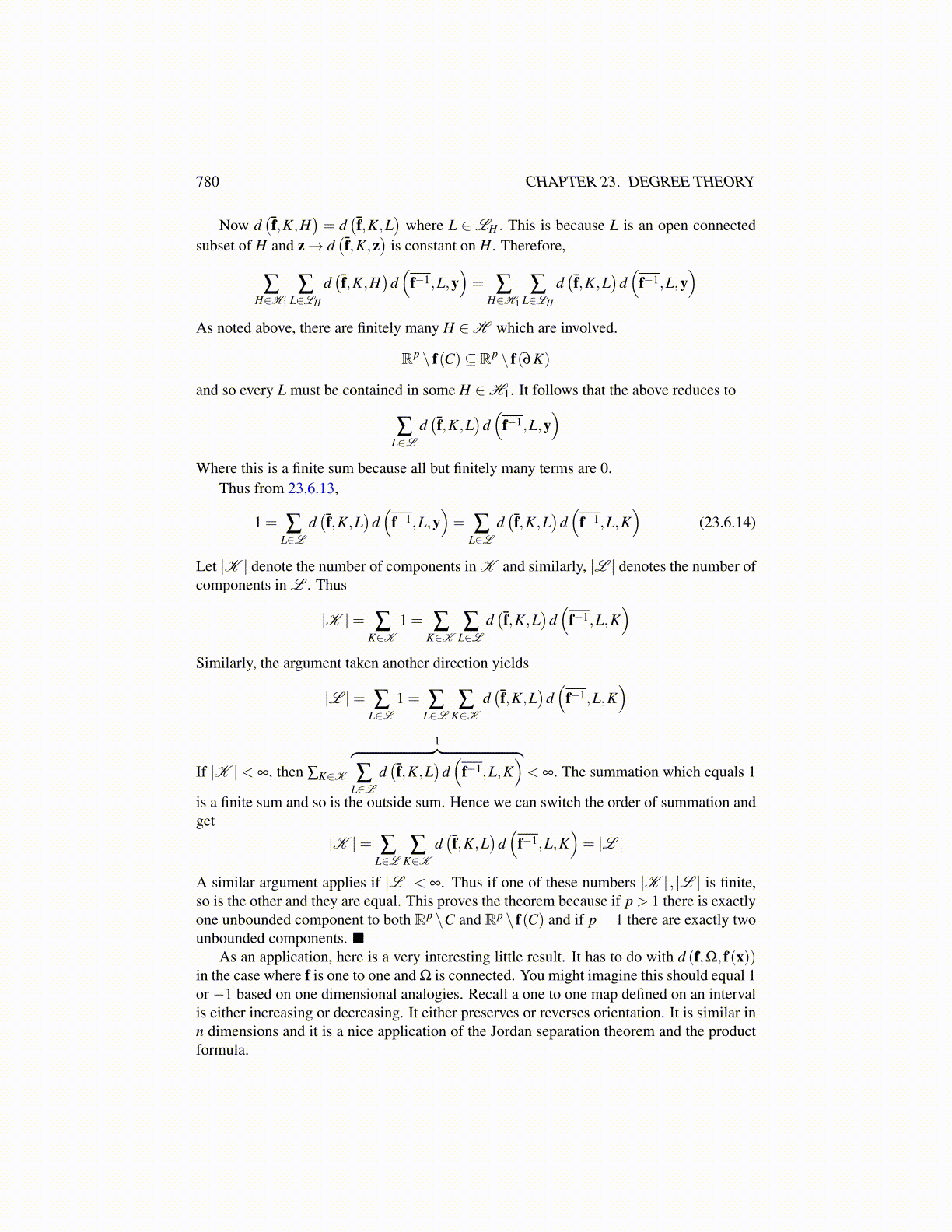
780 CHAPTER 23. DEGREE THEORY
Now d(f̄,K,H
)= d
(f̄,K,L
)where L ∈LH . This is because L is an open connected
subset of H and z→ d(f̄,K,z
)is constant on H. Therefore,
∑H∈H1
∑L∈LH
d(f̄,K,H
)d(
f−1,L,y)= ∑
H∈H1
∑L∈LH
d(f̄,K,L
)d(
f−1,L,y)
As noted above, there are finitely many H ∈H which are involved.
Rp \ f(C)⊆ Rp \ f(∂K)
and so every L must be contained in some H ∈H1. It follows that the above reduces to
∑L∈L
d(f̄,K,L
)d(
f−1,L,y)
Where this is a finite sum because all but finitely many terms are 0.Thus from 23.6.13,
1 = ∑L∈L
d(f̄,K,L
)d(
f−1,L,y)= ∑
L∈Ld(f̄,K,L
)d(
f−1,L,K)
(23.6.14)
Let |K | denote the number of components in K and similarly, |L | denotes the number ofcomponents in L . Thus
|K |= ∑K∈K
1 = ∑K∈K
∑L∈L
d(f̄,K,L
)d(
f−1,L,K)
Similarly, the argument taken another direction yields
|L |= ∑L∈L
1 = ∑L∈L
∑K∈K
d(f̄,K,L
)d(
f−1,L,K)
If |K |< ∞, then ∑K∈K
1︷ ︸︸ ︷∑
L∈Ld(f̄,K,L
)d(
f−1,L,K)< ∞. The summation which equals 1
is a finite sum and so is the outside sum. Hence we can switch the order of summation andget
|K |= ∑L∈L
∑K∈K
d(f̄,K,L
)d(
f−1,L,K)= |L |
A similar argument applies if |L | < ∞. Thus if one of these numbers |K | , |L | is finite,so is the other and they are equal. This proves the theorem because if p > 1 there is exactlyone unbounded component to both Rp \C and Rp \ f(C) and if p = 1 there are exactly twounbounded components.
As an application, here is a very interesting little result. It has to do with d (f,Ω, f(x))in the case where f is one to one and Ω is connected. You might imagine this should equal 1or −1 based on one dimensional analogies. Recall a one to one map defined on an intervalis either increasing or decreasing. It either preserves or reverses orientation. It is similar inn dimensions and it is a nice application of the Jordan separation theorem and the productformula.